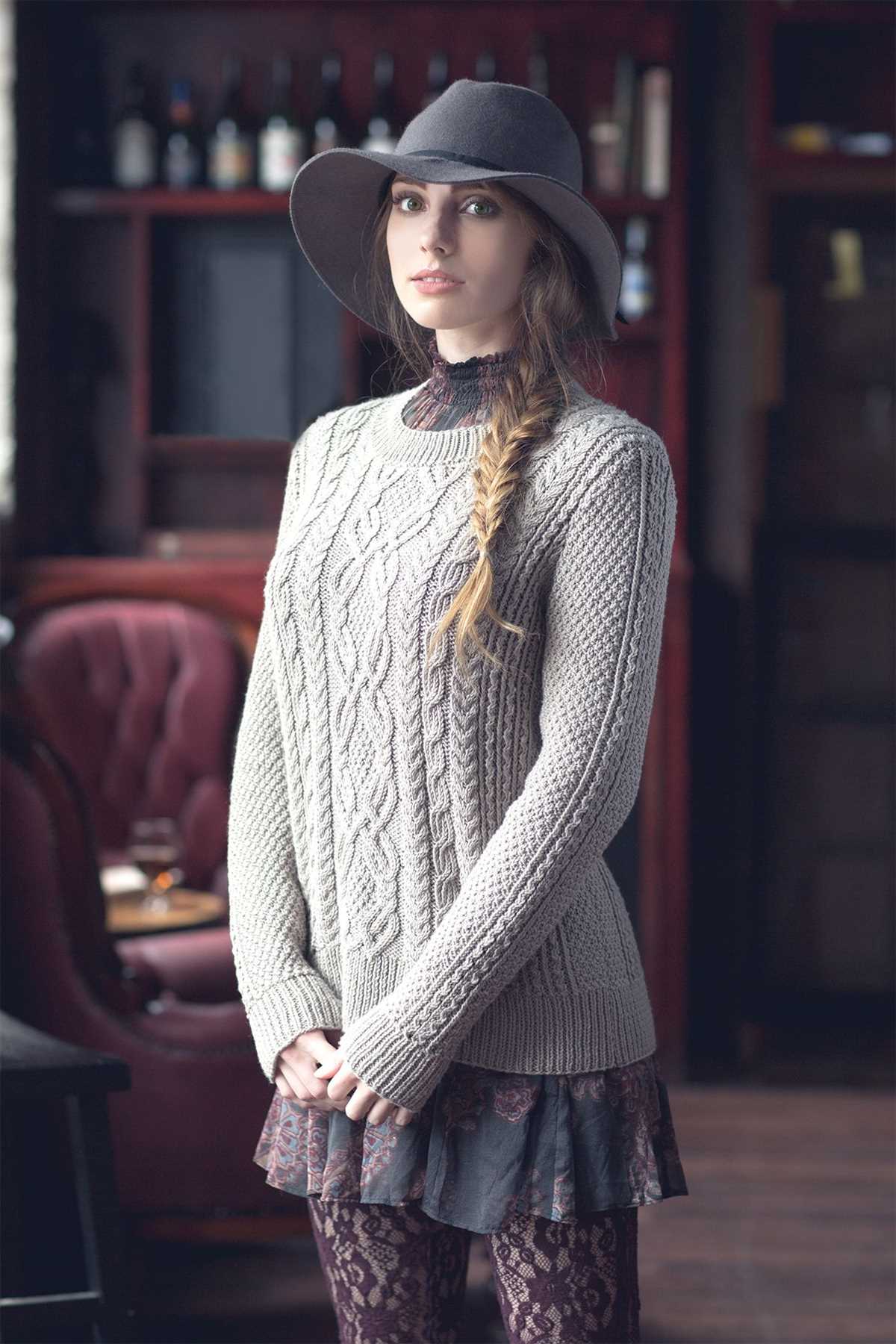
Knitting has been a beloved craft for centuries, and one of the most popular projects for knitters is creating a warm and stylish sweater. Among the many sweater patterns available, the Aran knit sweater pattern stands out for its intricate design and rich history.
Originating from the Aran Islands, located off the west coast of Ireland, the Aran knit sweater has become a traditional symbol of Irish heritage. The pattern’s distinctive cables, twists, and textured stitches are inspired by the rugged landscape, fishing communities, and maritime history of the islands.
The Aran knit sweater pattern is characterized by its unique combination of stitch patterns, which are not only visually striking but also provide added warmth and durability to the garment. From complex rope cables to simple diamond motifs, each element of the design has a story to tell, reflecting the life and culture of the Aran Islands.
Knitting an Aran knit sweater is a labor of love that requires skill and patience. The intricate patterns may seem daunting at first, but with practice and the right instructions, anyone can create a beautiful, handcrafted sweater that will be treasured for years to come. Whether you’re an experienced knitter looking for a new challenge or a beginner eager to embark on their first sweater project, the Aran knit sweater pattern is a timeless choice that will never go out of style.
Aran Knit Sweater Pattern
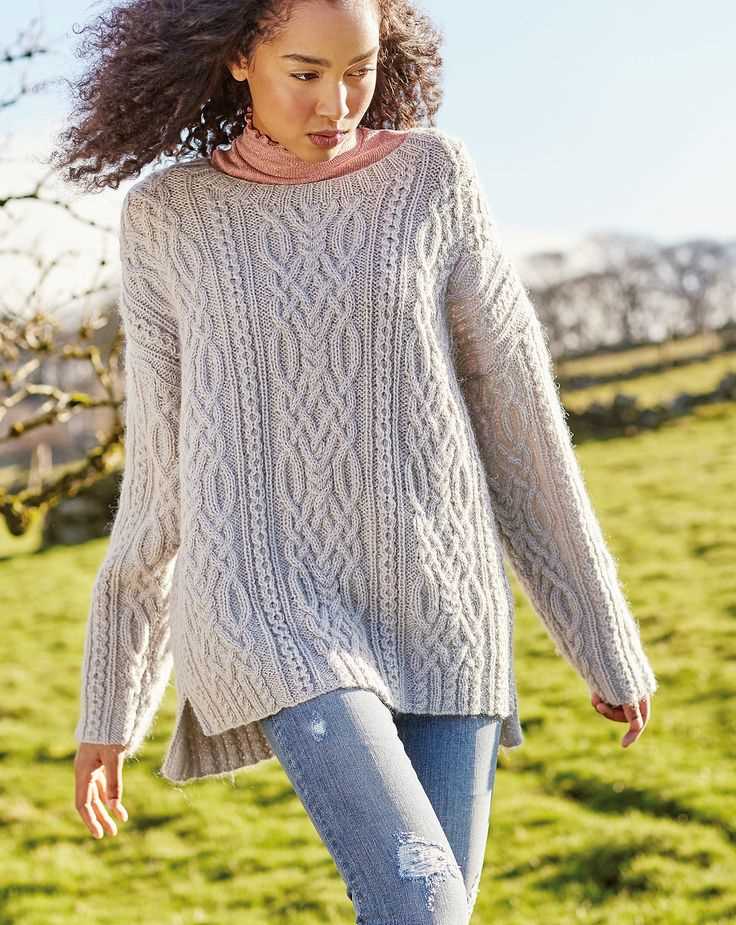
Aran knit sweaters are a classic style of knitwear that originated from the Aran Islands, off the west coast of Ireland. These sweaters are known for their intricate cable and diamond patterns, which are not only beautiful but also functional, providing extra warmth and insulation.
The Aran knit sweater pattern typically consists of a basic silhouette, including a ribbed neckline, cuffs, and hem. The main attraction of the sweater lies in the intricate patterns that adorn the front, back, and sleeves. These patterns often symbolize elements of nature, such as waves, honeycombs, or the ropes used by fishermen.
Cable knitting is a technique commonly used in Aran sweaters to create the intricate patterns. The patterns are formed by crossing stitches over each other, creating the appearance of cables. This technique adds texture and depth to the garment, making the sweater visually appealing and interesting to knit.
The Aran knit sweater pattern is typically knit with heavy worsted or aran weight yarn, which provides warmth and structure to the garment. Knitters often choose natural fibers such as wool or a wool blend, which not only adds to the traditional aesthetic of the sweater but also enhances its functionality, as wool is an excellent insulator.
- Lorem ipsum: dolor sit amet, consectetur adipiscing elit.
- Sed do eiusmod tempor: incididunt ut labore et dolore magna aliqua.
- Ut enim ad minim veniam: quis nostrud exercitation ullamco laboris nisi ut aliquip ex ea commodo consequat.
- Duis aute irure dolor: in reprehenderit in voluptate velit esse cillum dolore eu fugiat nulla pariatur.
- Excepteur sint occaecat: cupidatat non proident, sunt in culpa qui officia deserunt mollit anim id est laborum.
| Size | Yarn Required | Needle Size |
|---|---|---|
| Small | 5 skeins | US 7 (4.5mm) |
| Medium | 6 skeins | US 8 (5.0mm) |
| Large | 7 skeins | US 9 (5.5mm) |
What is an Aran knit sweater?
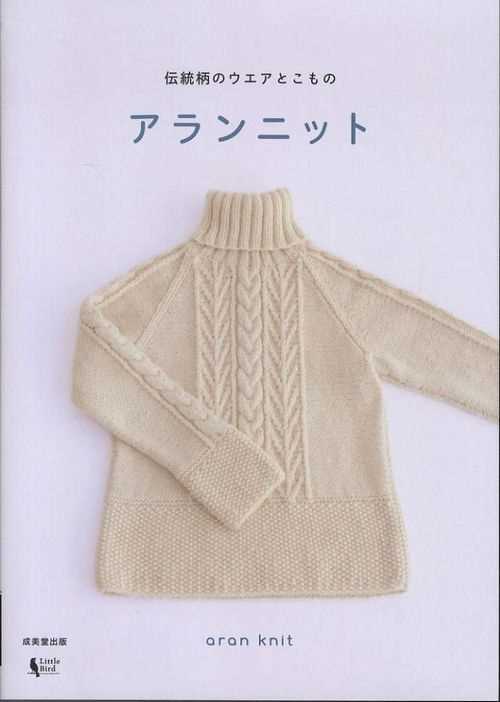
An Aran knit sweater, also known as an Aran jumper, is a traditional Irish sweater that originated in the Aran Islands off the west coast of Ireland. These sweaters are renowned for their intricate patterns and high-quality wool, making them a popular choice for those seeking warmth, comfort, and style.
One of the defining features of an Aran knit sweater is the cable pattern, which is created by crossing stitches over each other to form a twisted rope-like effect. This technique adds depth and texture to the sweater, giving it a unique and visually appealing look. The cable pattern often symbolizes different aspects of Irish folklore and heritage, with each design possessing its own significance.
The Aran knit sweater is typically made from natural fibers, such as wool or a blend of wool and other materials. This makes it an excellent choice for insulation and providing warmth in colder climates. The wool used in Aran sweaters is often soft and breathable, allowing for comfortable wear.
In addition to their functional qualities, Aran knit sweaters have also become a fashion statement, both in Ireland and around the world. Many people appreciate the timeless design and craftsmanship that goes into creating these sweaters, making them a staple in their wardrobe. Whether worn as a cozy layer during outdoor adventures or as a stylish addition to an outfit, an Aran knit sweater is a versatile and classic piece of clothing that never goes out of style.
History of Aran knitting
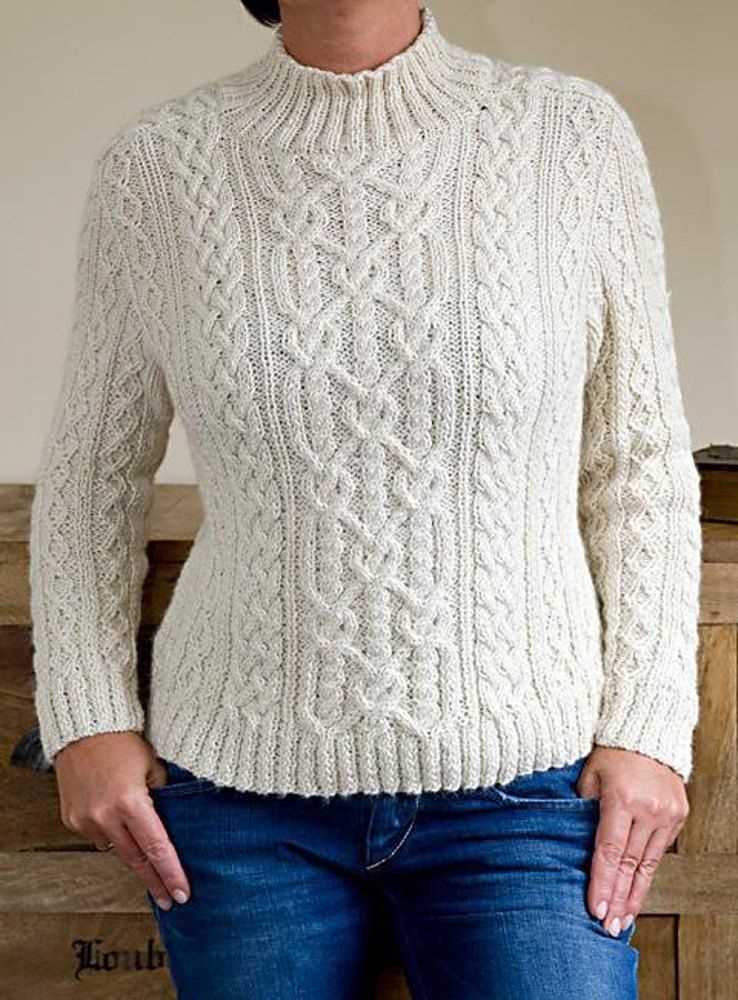
Aran knitting, also known as Aran sweater or jumper, is a traditional style of knitting that originated in the Aran Islands off the west coast of Ireland. The history of Aran knitting can be traced back to the early 20th century when local fisherman’s wives started knitting these distinctive garments as a means of providing extra warmth and protection for their loved ones working at sea. The unique patterns and intricate designs of Aran sweaters have since become iconic symbols of Irish heritage and craftsmanship.
One of the defining features of Aran knitting is the use of cable patterns, which are created by twisting and crossing the stitches to form intricate designs. These cable patterns are not only decorative, but also functional, as they help to trap heat and provide extra insulation. Each cable pattern has its own symbolism and meaning, often representing elements of the fisherman’s life, such as ropes, nets, and waves. The patterns were passed down through generations, with each family putting their own unique twist on the designs.
Aran sweaters gained international recognition and popularity in the mid-20th century, thanks to the efforts of Irish tourism and the fashion industry. The timeless charm and versatility of Aran sweaters made them a favorite among both locals and tourists alike. Today, Aran knitting continues to thrive as a cherished tradition in Ireland, with many skilled artisans and designers keeping the craft alive. Whether worn for their practicality or as a fashion statement, Aran sweaters are a beloved symbol of Irish culture and a lasting testament to the ingenuity and creativity of the women who first knitted them.
Materials and Tools for Knitting an Aran Sweater

Knitting an Aran sweater requires specific materials and tools to ensure the best results and a comfortable fit. Here is a list of essential items you will need:
- Yarn: Choose a high-quality, medium-weight yarn that is suitable for knitting an Aran sweater. Traditional options include wool or wool-blend yarns, as they provide a warm and cozy feel.
- Knitting Needles: You will need a set of straight or circular knitting needles in the appropriate size for your chosen yarn. Check the yarn label or pattern instructions for the recommended needle size.
- Cable Needle: Aran sweaters are known for their intricate cable patterns. A cable needle is a small, double-pointed needle used to hold stitches aside while working on cable sections.
- Tapestry Needle: A tapestry needle with a large eye is essential for weaving in loose ends and sewing seams. Look for a blunt-tipped needle to prevent snagging the yarn.
- Stitch Markers: Stitch markers are helpful for keeping track of specific stitch patterns or sections. They can be small plastic rings or removable markers that easily slide onto the knitting needles.
- Measuring Tape: Accurate measurements are crucial for knitting a well-fitting Aran sweater. Make sure to have a measuring tape on hand to take chest, arm, and length measurements as needed.
Additionally, it is advisable to have a stitch holder or spare yarn for temporarily holding stitches, a row counter to keep track of your progress, and a good pair of scissors for cutting yarn. Having a pattern or reference guide specific to Aran knitting patterns is also essential for understanding the unique stitch techniques involved.
Aran knitting: Basic stitches
Aran knitting is characterized by its intricate and textured patterns, created by using a combination of basic stitches. These stitches, such as the knit stitch, purl stitch, and cable stitch, are the building blocks of Aran knitting and form the foundation of the unique designs.
The most commonly used stitch in Aran knitting is the knit stitch. This stitch is created by inserting the right-hand needle into the loop on the left-hand needle, wrapping the yarn around the needle and pulling it through the loop to create a new stitch. The knit stitch forms the basis of the majority of Aran patterns and creates the classic “V” shape that is characteristic of Aran sweaters.
The purl stitch is another important stitch in Aran knitting. It is the reverse of the knit stitch, creating a raised bump on the fabric. The purl stitch is achieved by inserting the right-hand needle into the loop on the left-hand needle from right to left, wrapping the yarn around the needle, and pulling it through the loop in the opposite direction. The purl stitch is often used in combination with the knit stitch to create intricate textured patterns and add depth to the design.
In addition to the knit and purl stitches, cable stitches are also commonly used in Aran knitting. Cable stitches involve crossing a set number of stitches over each other to create a twisted cable effect. This is achieved by temporarily holding a set of stitches on a cable needle or a spare knitting needle, knitting the next set of stitches, and then knitting the stitches from the cable needle or spare needle. Cable stitches add a three-dimensional quality to Aran knitting and are often featured prominently in the design.
By combining these basic stitches, Aran knitters can create a wide range of intricate and beautiful patterns. Whether it’s the traditional honeycomb pattern, the intricate diamond pattern, or the classic cable pattern, the possibilities are endless with Aran knitting.
Step-by-step guide to knitting an Aran sweater
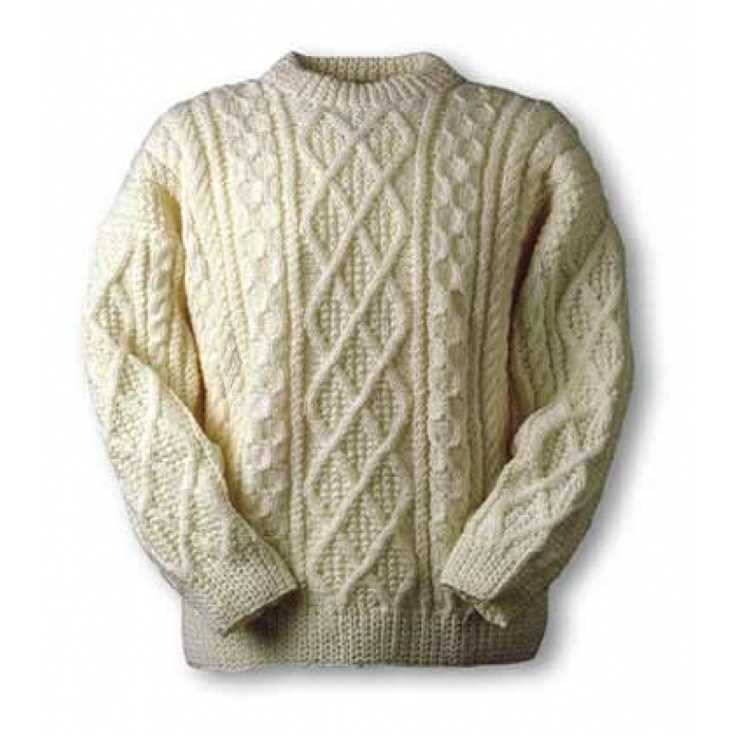
If you’re looking to challenge yourself with a new knitting project, why not try knitting an Aran sweater? Aran sweaters are known for their intricate patterns and rich texture, making them a classic and timeless addition to any wardrobe. Here’s a step-by-step guide to help you get started on your own Aran sweater.
Choose your pattern and yarn
The first step in knitting an Aran sweater is to choose a pattern and the appropriate yarn. Aran sweater patterns typically feature intricate cable and stitch designs, so choose a pattern that matches your skill level. When selecting yarn, look for one that is soft, warm, and durable. Traditional Aran sweaters are often knit using natural fibers like wool, but there are also plenty of options available in acrylic or blends.
Gauge swatch and measurements
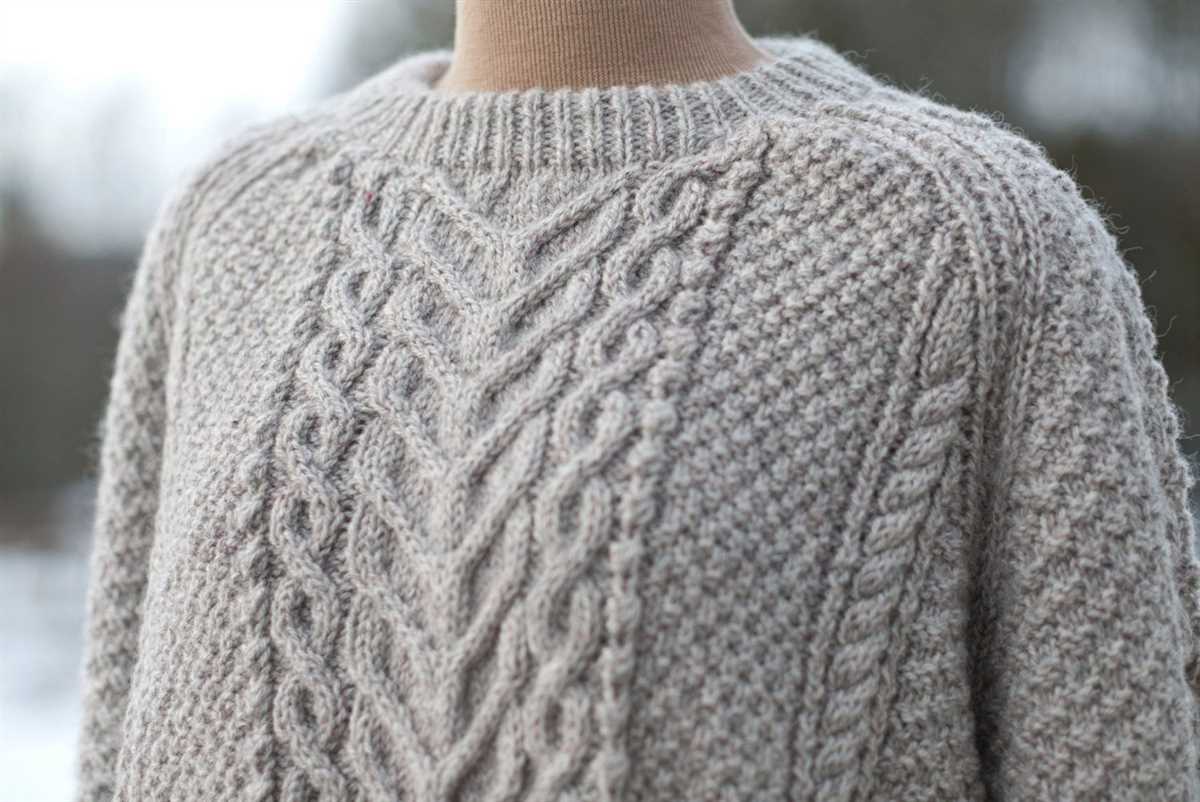
Before you start knitting, it’s essential to knit a gauge swatch to determine the number of stitches and rows per inch. This will ensure that your finished sweater will fit properly. Follow the instructions in your pattern for the recommended gauge and use the appropriate needle size. Additionally, take accurate measurements of your body, including chest, waist, and arm length, as this will help you choose the correct size and make any necessary adjustments to the pattern.
Cast on and knit the body
Once you have your pattern, yarn, and measurements ready, it’s time to cast on and start knitting the body of your Aran sweater. Follow the pattern instructions for the cast-on method and the number of stitches required. Then, work the body in the desired stitch pattern, following the instructions row by row. Pay attention to any shaping or cable designs that may be included in the pattern and make sure to keep track of your progress as you go.
Add sleeves and neckline
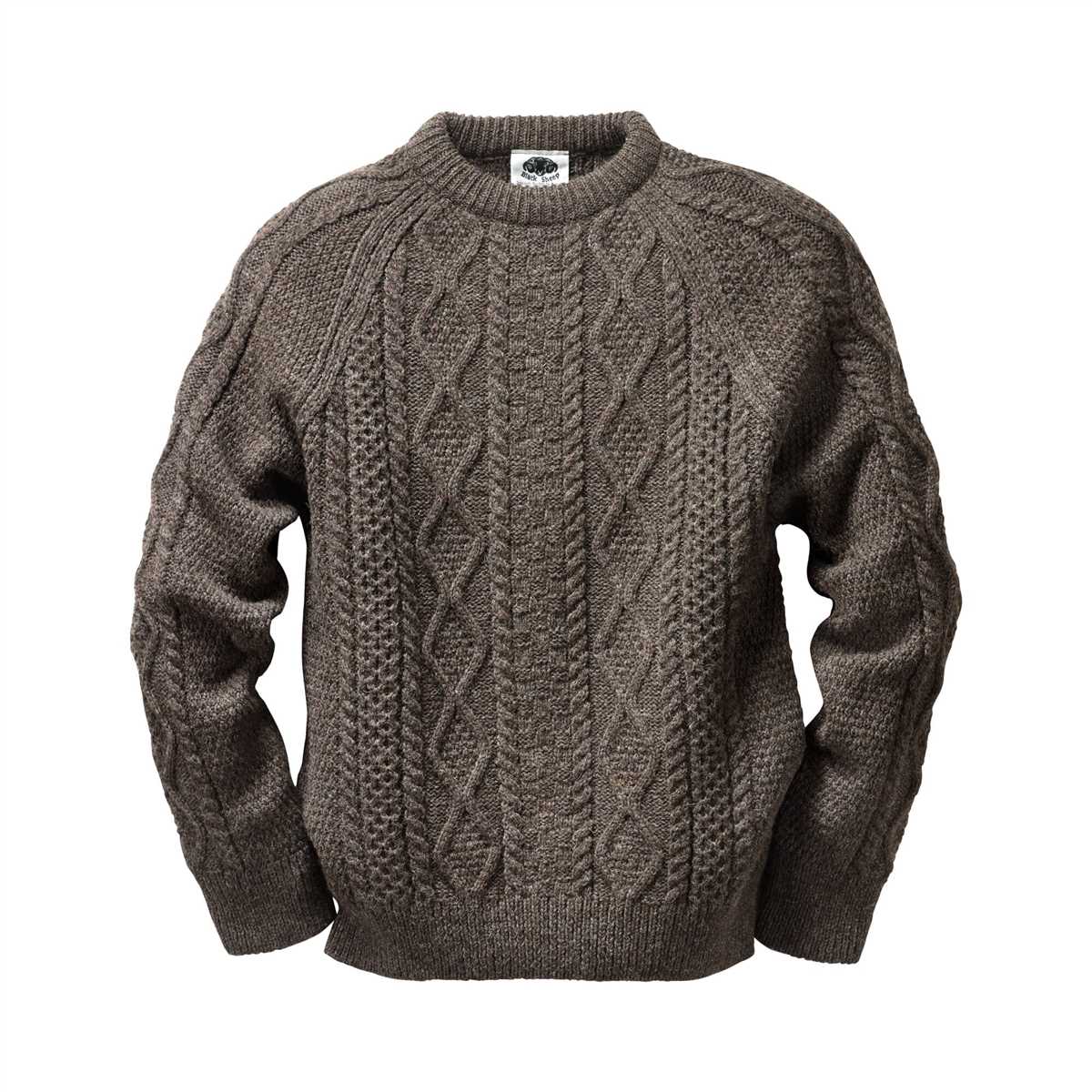
After completing the body of the sweater, it’s time to add the sleeves and neckline. Again, follow the pattern instructions for the number of stitches and shaping required for the sleeves. You may need to use double-pointed needles or circular needles depending on the pattern. Once the sleeves are complete, you can move on to knitting the neckline. This may involve picking up stitches along the edge of the neckline and working in ribbing or another stitch pattern to create a finished look.
Finishing touches
To complete your Aran sweater, finish off any loose ends, weave in any remaining yarn tails, and block the sweater to shape it. Blocking involves wetting the sweater and laying it flat to dry, which helps even out the stitches and give the finished sweater a professional look. Once the sweater is dry, you can try it on and admire your handiwork!
Knitting an Aran sweater may take time and patience, but the end result is a beautiful and unique garment that you can be proud of. Whether you’re an experienced knitter or just starting out, following these steps will guide you through the process and help you create a stunning Aran sweater.
Finishing Touches for Your Aran Knit Sweater
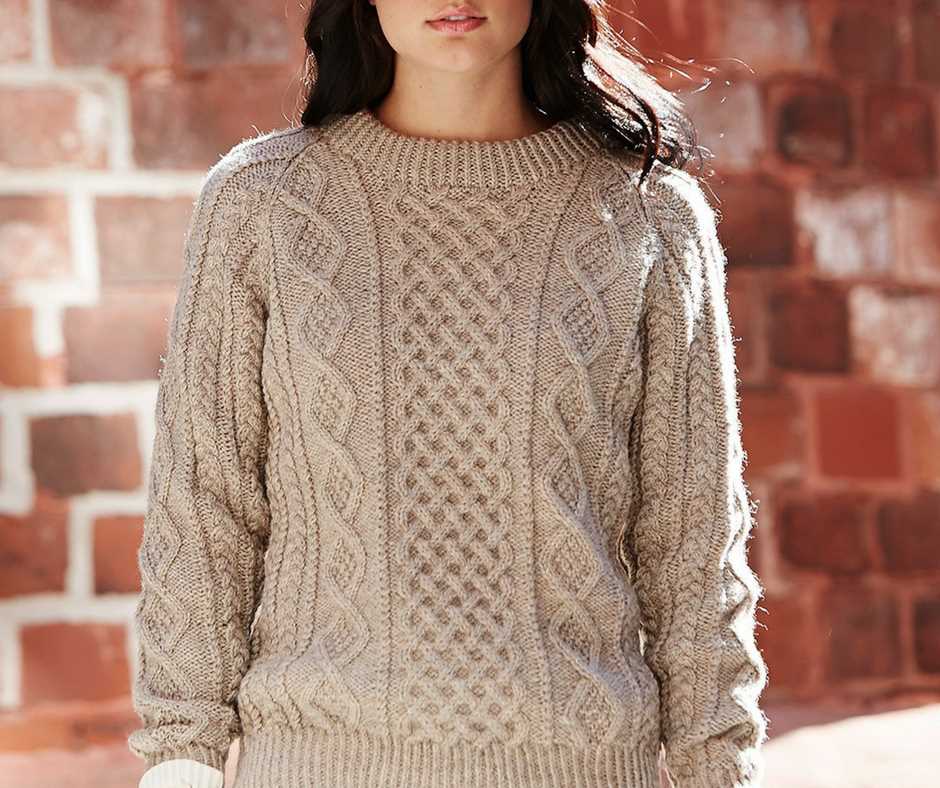
When it comes to completing your Aran knit sweater, attention to detail is key. The finishing touches can truly elevate your creation, making it a standout piece in your wardrobe. Here are some ideas to add those final touches that will ensure your sweater is both stylish and functional.
1. Adding Ribbed Trims
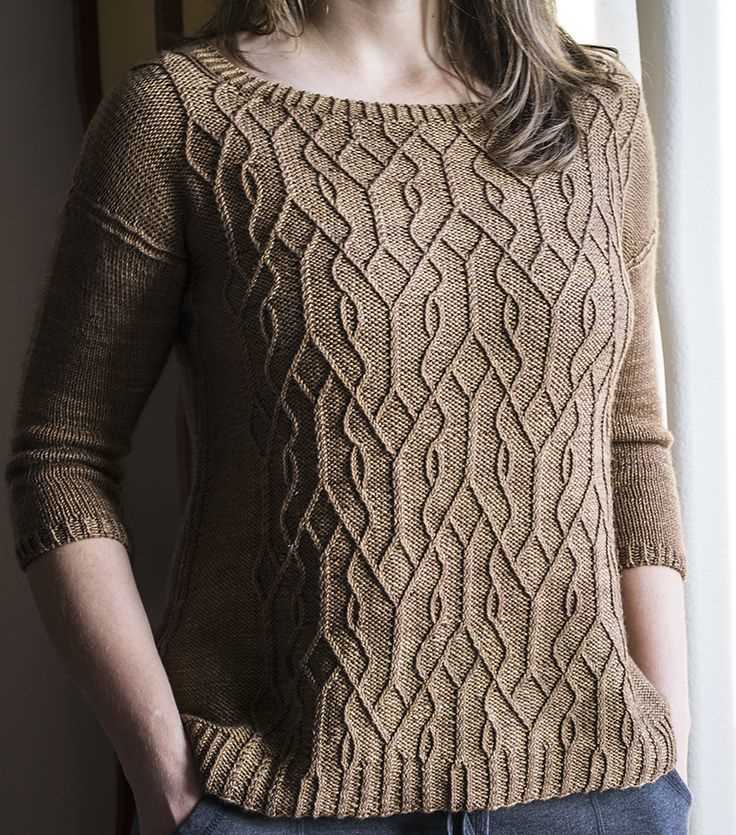
To give your Aran knit sweater a polished look, consider adding ribbed trims to the cuffs, hem, and neckline. The ribbed texture not only adds a touch of sophistication but also helps to maintain the shape and structure of the sweater. Opt for a contrasting color or stick to the same yarn for a subtle, cohesive finish.
2. Sewing on Buttons
Add a personal touch to your Aran knit sweater by carefully selecting and sewing on buttons. Choose from a wide range of styles, colors, and sizes to complement the overall design and enhance the aesthetic appeal of the sweater. Before sewing the buttons, make sure to reinforce the areas where they will be attached to ensure durability.
3. Blocking and Shaping
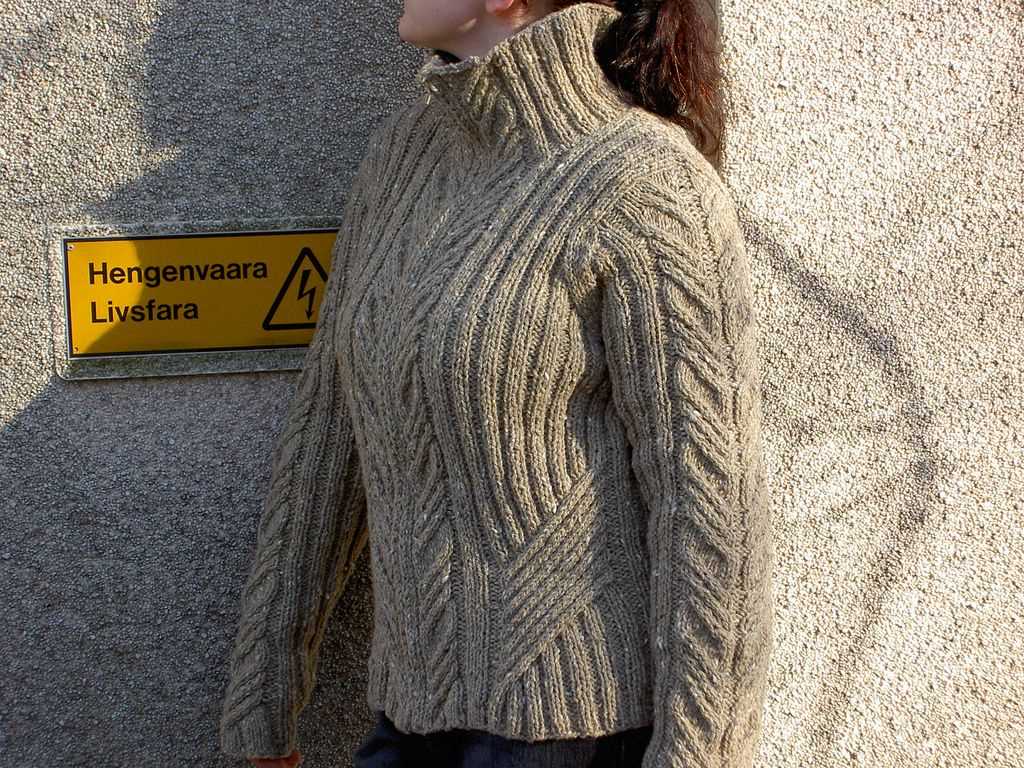
Once you have completed the knitting process, it is important to block and shape your Aran knit sweater to give it a professional look. Blocking involves wetting the sweater, gently stretching it to the desired dimensions, and allowing it to dry flat. This process helps to even out the stitches, eliminate any curling, and ensure that the finished garment fits perfectly.
4. Adding a Zipper or Toggle Closure
If buttons are not your preferred closure method, consider adding a zipper or toggle closure to your Aran knit sweater. This can give the sweater a modern and practical touch, allowing for easy wear and removal. Ensure that the closure matches the overall style of the sweater and is securely sewn in place.
5. Embellishing with Embroidery
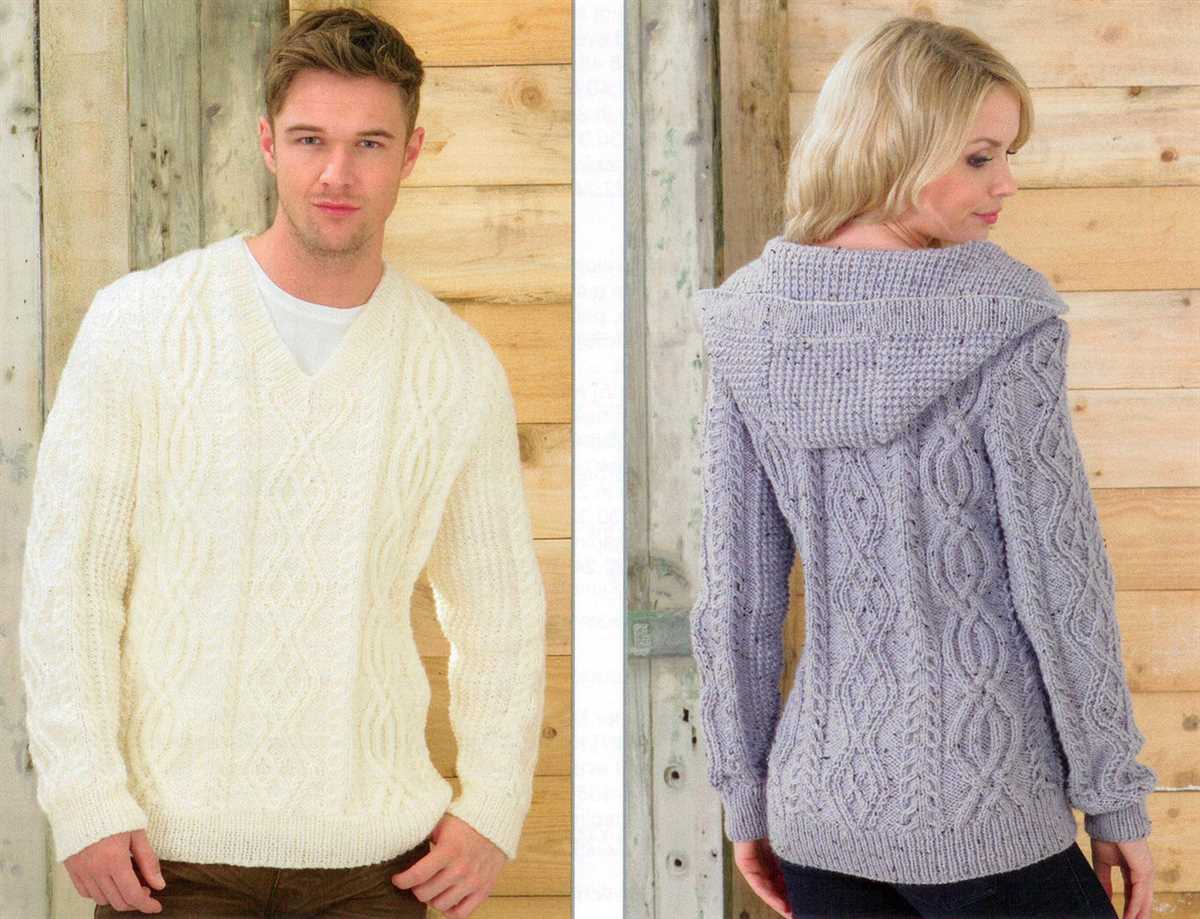
If you want to take your Aran knit sweater to the next level, consider adding some delicate embroidery to the design. Embroidery can be used to create intricate patterns or personalized motifs, adding a unique and artistic touch. Use embroidery floss in complementary colors to make the details stand out.
In conclusion, the finishing touches are crucial for creating a truly exceptional Aran knit sweater. Whether it’s adding ribbed trims, sewing on buttons, blocking and shaping, adding a closure, or embellishing with embroidery, each detail contributes to the overall beauty and functionality of the garment. So take your time, pay attention to the small things, and enjoy the process of transforming your Aran knit sweater into a masterpiece.
Care and maintenance of Aran knit sweaters
Aran knit sweaters are known for their beautiful intricate patterns and cozy warmth. To keep your Aran knit sweater looking its best and prolong its lifespan, it’s important to give it proper care and maintenance. Here are some tips to help you care for your Aran knit sweater:
Hand-Washing
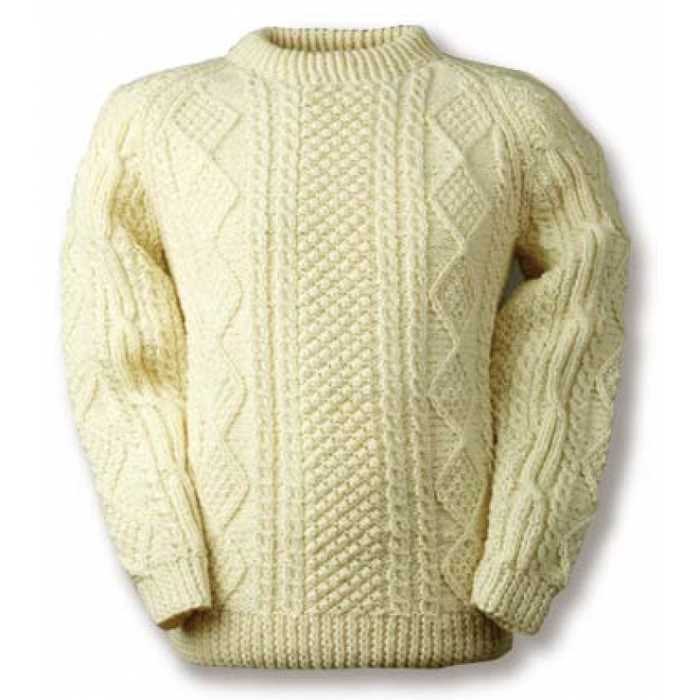
The best way to clean an Aran knit sweater is by hand-washing it. Fill a basin with lukewarm water and add a small amount of mild detergent. Gently agitate the sweater in the water, making sure to not stretch or wring it. Rinse thoroughly with clean water and gently squeeze out excess water. Avoid twisting or wringing the sweater as it can cause damage to the delicate fibers.
Drying
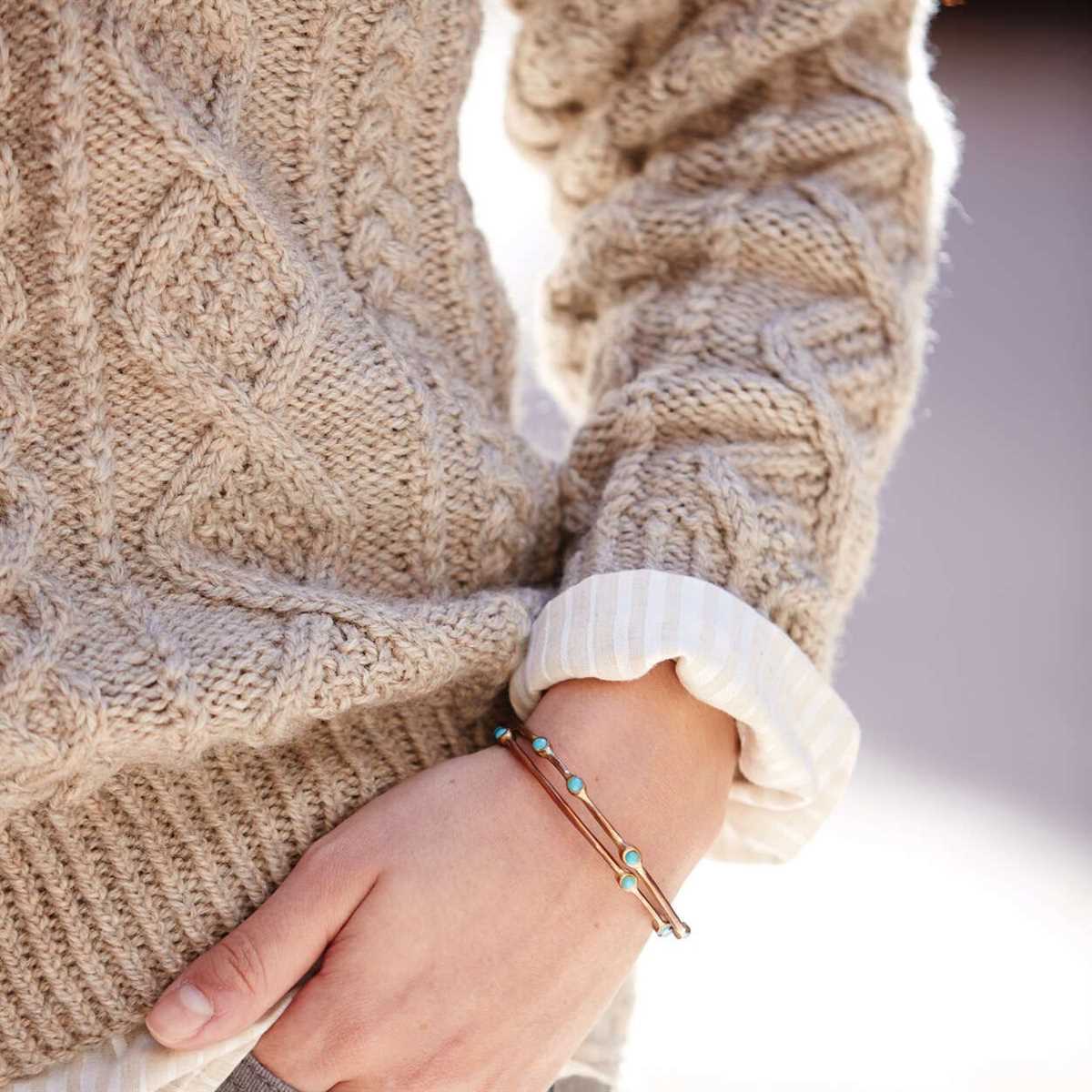
After washing, lay the sweater flat on a clean towel and gently reshape it to its original size. Avoid hanging or wringing the sweater, as this can cause it to lose its shape. Allow the sweater to air dry away from direct sunlight or heat sources. It’s important to let the sweater dry completely before storing or wearing it again.
Storing
- Before storing your Aran knit sweater, make sure it is clean and completely dry to prevent any mildew or mold growth.
- Always fold your sweater instead of hanging it, as hanging can stretch the delicate fibers and cause the sweater to lose its shape.
- Store your sweater in a cool, dry place away from direct sunlight and moisture. Consider using a moth repellent or cedar balls to protect the sweater from moths.
General Maintenance
To keep your Aran knit sweater looking its best, there are a few general maintenance tips to follow:
- Avoid wearing your sweater when engaging in activities that may cause excessive sweating or rubbing, as this can cause pilling.
- If you notice any loose threads or snags, carefully tuck them back in or use a crochet hook to pull them through to the inside of the sweater.
- Consider storing your sweater in a breathable bag or wrapping it in acid-free tissue paper to protect it from dust and insects.
- If your sweater does develop pilling, you can gently remove it with a sweater shaver or a fabric comb. Be careful not to pull or snag the yarn.
By following these care and maintenance tips, you can ensure that your Aran knit sweater remains beautiful and cozy for years to come.
The popularity of Aran knit sweaters today
Despite their origins in a small Irish fishing village over a century ago, Aran knit sweaters continue to be a beloved and popular fashion trend today. Their timeless design, rich cultural history, and superior craftsmanship have helped them stand the test of time and remain relevant in the world of fashion.
Aran knit sweaters have become a staple wardrobe item not only in Ireland but also around the world. The intricate patterns and stitches create a unique texture that adds depth and visual interest to any outfit. Whether worn with jeans for a casual look or paired with a skirt for a more formal occasion, these sweaters are versatile and can be dressed up or down to suit any style.
The popularity of Aran knit sweaters can also be attributed to their durability and warmth. Made from high-quality wool, these sweaters provide exceptional insulation and protection against the cold weather. Additionally, the tight stitches and intricate patterns make them less prone to stretching or losing their shape over time.
Furthermore, the growing trend of sustainable and ethical fashion has also contributed to the popularity of Aran knit sweaters. They are often hand-knit using traditional techniques, supporting local artisans and preserving craftsmanship traditions. Their longevity and timeless appeal also make them a sustainable choice, as they are less likely to be discarded and replaced with new items.
In conclusion, Aran knit sweaters have remained popular throughout the years due to their timeless design, versatility, durability, and sustainability. They continue to captivate fashion enthusiasts and serve as a symbol of Irish heritage and craftsmanship. Whether worn for their cultural significance or their stylish appeal, these sweaters are sure to remain a fashion staple for many years to come.